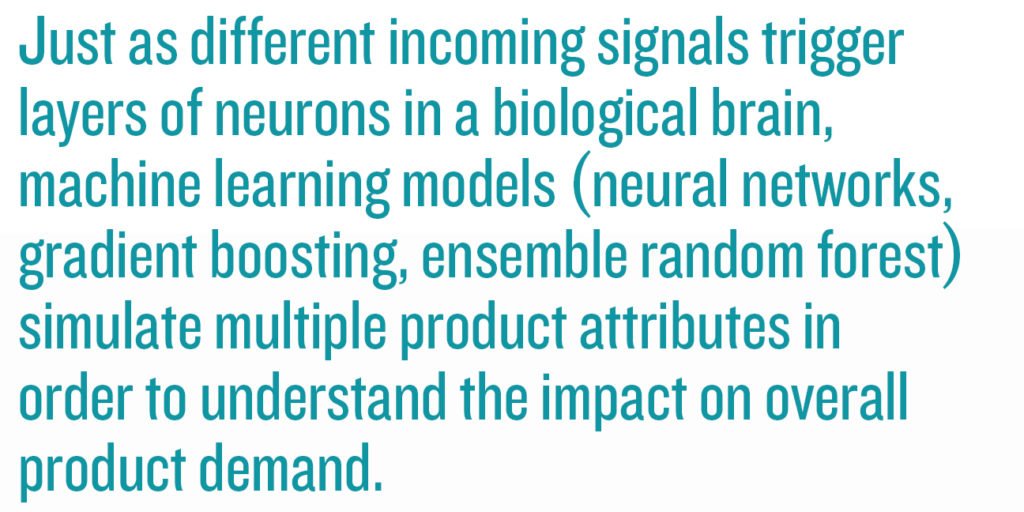
During the last decade, a significant amount of attention has been paid to “Attribute-Based Forecasting” in the demand planning community. The idea originated because new product launches with limited history still require forecasts in various demand planning systems. As manufacturers and retailers offer more and more choices to shoppers, estimating the potential—as well as future demand for all these different variations—has become a major challenge to the supply chain. Similar to the Middlegame Competitive Interaction Analysis (CIA)® platform, data scientists have turned to product attributes (brand, size, package type, flavour, etc.) at the SKU-level as a foundation for preparing and delivering better forecasts.
The new products are usually associated with a group of existing SKUs that have a similar combination of attribute options. For example, an attribute is colour while an option is either red or blue. The groups are called “demand profiles” by most forecasters. Many of the advanced demand planning systems will automatically create the demand profiles straight from the data, apply the appropriate profile to any new products, produce forecasts based on the performance of the demand profile, monitor predictive accuracy and update recommended profile as actual demand data is observed.
In a recent conversation with an old friend and colleague, Charles Chase—an Executive Industry Consultant at SAS Institute Inc.—we discussed the concept of new product forecasting and the use of the attributes to improve prediction. That talk is what prompted this blog entry. Charlie explained how his recent work focused on a machine learning to handle these new product introductions in situations when there is little, if any, direct sales history available to study the product’s demand patterns.

Just as different incoming signals trigger layers of neurons in a biological brain, machine learning models (neural networks, gradient boosting, ensemble random forest) simulate multiple product attributes in order to understand the impact on overall product demand. These techniques allow algorithms to further train themselves as more data becomes available. Charlie and his team at SAS have been able to improve forecast accuracy for their retailer and manufacturer clients between ten and twenty percent.
Charlie further defined an approach called Proportional Profile Planning. This is gaining a lot of traction in the apparel and footwear industries. It disaggregates the higher-level forecasts for several groups of items into lower-level forecasts at the SKU-level. It does this by using the attributes since the individual items can quickly overwhelm the system with millions of different forecasts. When these SKUs are organized into demand profiles, the sales pattern becomes much easier to predict. The outcome is that inventory planners have fewer, but significantly more accurate, forecasts. This creates massive efficiencies.
This is very similar to the Middlegame approach that we described in a blog a few years back explaining the significance of Fader & Hardie (1996). Our goal is to not only offer a sizing of the new products, but to also explain expected incrementality versus transferred demand. Regardless, Charlie is always our go-to expert for anything aligned with demand planning and forecasting. He is a prolific writer that has added so much to our thinking on the subject. Please look up his SAS webpage for more details. I highly recommend his latest book Next Generation Demand Management: People, Process, Analytics, and Technology.
Middlegame is the only ROMI consultancy of its kind that offers a holistic view of the implications of resource allocation and investment in the marketplace. Our approach to scenario-planning differs from other marketing analytics providers by addressing the anticipated outcome for every SKU (your portfolio and your competitors’) in every channel. Similar to the pieces in chess, each stakeholder can now evaluate the trade-offs of potential choices and collectively apply them to create win-win results.
